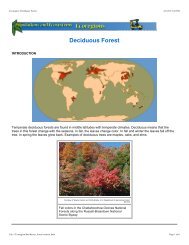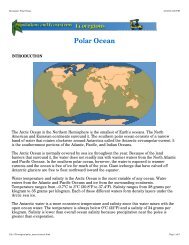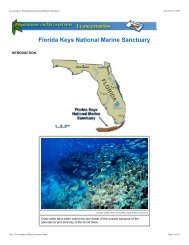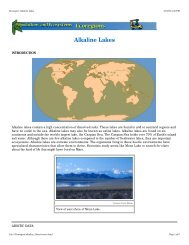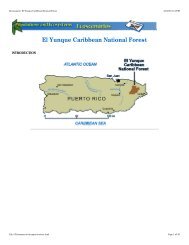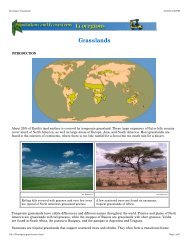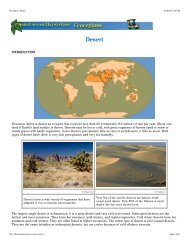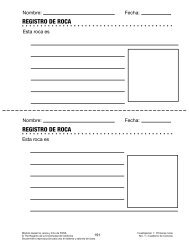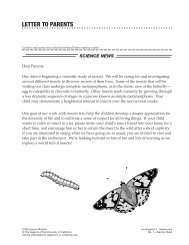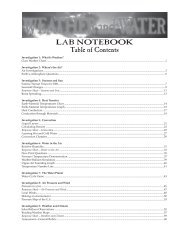Ecoscenarios Combined - FOSSweb
Ecoscenarios Combined - FOSSweb
Ecoscenarios Combined - FOSSweb
Create successful ePaper yourself
Turn your PDF publications into a flip-book with our unique Google optimized e-Paper software.
Ecoscenario: Monterey Bay National Marine Sanctuary<br />
4/16/03 3:22 PM<br />
Courtesy of John Schexnayder<br />
Patches of kelp forest often occur close to shore.<br />
Monterey Bay National Marine Sanctuary also has other coastal and near-coastal marine habitats. These include sandy<br />
beaches, coastal dunes, rocky intertidal, and deep ocean. In the spring, water from deep underwater canyons moves up<br />
to the surface. The water is cold and contains lots of nutrients that help phytoplankton grow. This movement of water to<br />
the ocean surface is called upwelling. Upwelling brings nutrients up to the layer of water that has sunlight, resulting in high<br />
productivity by phytoplankton in Monterey Bay.<br />
ABIOTIC DATA<br />
The ocean is influenced by abiotic factors in the air and water, and along the ocean bottom. Monterey Bay National<br />
Marine Sanctuary is affected by ocean currents, nutrient upwelling, and El Niño events. The shape of the seabed and the<br />
strength of waves are also important.<br />
A typical day during summer and early fall at Monterey Bay National Marine Sanctuary is cool, with air temperatures of<br />
16–18°C (61–64°F). At this time of year, winds blow from the northwest at about 4–4.5 meters/second (8–9 knots). The<br />
skies may be somewhat cloudy, but rain rarely falls. This is the dry season at Monterey Bay.<br />
file:///Ecoscenario/monterey/content.html<br />
Page 4 of 14



